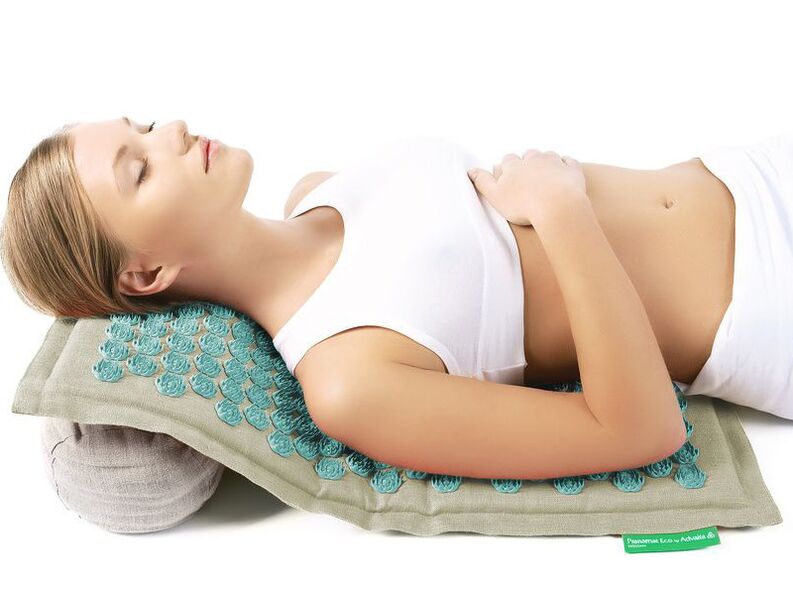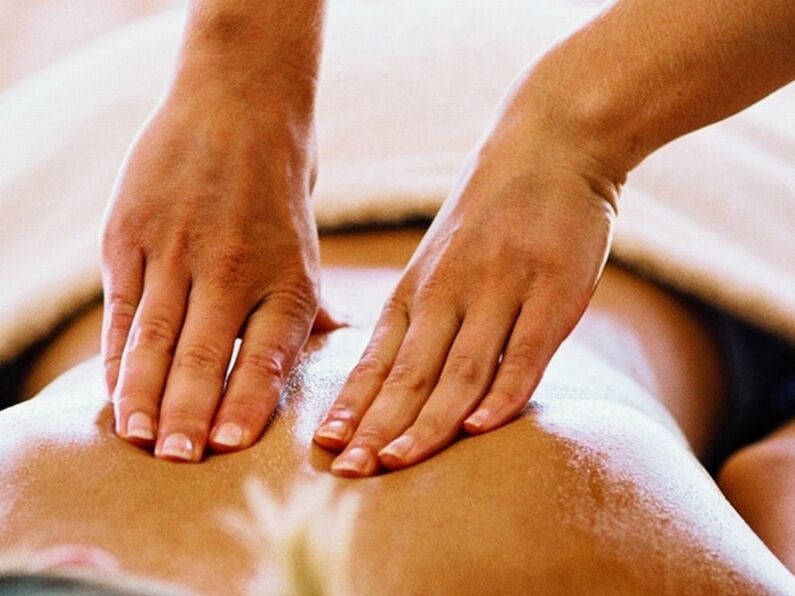Cervical osteochondrosis is a disease in which pain occurs not only in the cervical region, but also in the head, shoulder joints, cerebral circulation is disturbed. Contrary to the opinion that this disease is exclusively for the elderly, more and more young people are turning to specialists with neck pain. It's all about the lifestyle most people lead. Working at the computer, poor posture, bending, uncomfortable bed, this is all because of which cervical osteochondrosis develops. Treatment at home is possible in the initial stage of the disease, if you know the cause of its occurrence.
Causes and symptoms of cervical osteochondrosis
The main reasons for the development of osteochondrosis of the cervical spine:
- Sedentary lifestyle, computer work;
- Improper metabolism;
- Accumulation of salts between the vertebrae;
- Unbalanced diet;
- Inheritance;
- Cervical injuries;
- Improper functioning of hormones.

Before looking for ways to cure the neck from osteochondrosis, you should know the symptoms of pain in osteochondrosis. To correctly determine the symptoms, it is worth knowing that the vertebral artery, one of the largest vital vessels, passes through the cervical region. It is through it that the brain is fed with all the necessary substances. The curvature of the intervertebral discs, which at the same time causes strong pain sensations, is called osteochondrosis. At first, this disease of the joints and spine is almost impossible to detect, as this disease develops gradually, and the pain appears already at the moment when the space between the vertebrae is compressed to the extent that the nerve endings of the spine are affected. . This means a violation of cerebral circulation. Only at this moment do the first symptoms appear:
- First of all, pain appears in the neck area;
- Often disturbed by dizziness and headache, especially during movement;
- There is weakness in arms and legs, movement coordination is disturbed;
- Also, a symptom can be noise, tinnitus;
- Sudden mood swings;
- Violation of the digestive tract and urinary processes in the body.
If you do not consult a specialist at an early stage of the development of osteochondrosis, then more serious problems with the spine may appear, up to curvature.
Treatment of cervical osteochondrosis
There are several ways to treat osteochondrosis of the neck. Each patient suffering from this disease will find a suitable method of pain relief, it all depends on how severe the stage of the disease is. For example, dizziness in osteochondrosis of the cervical region can be cured with compresses according to folk recipes. It is important to remember that any treatment should be carried out comprehensively.
Folk remedies
Traditional medicine, with the proper application of recipes, can effectively relieve symptoms. Herbal infusions and decoctions, whose action is aimed at relieving inflammation, help to cope with the disease, here are some of them:
- A stew of needles. Pour boiling water over the pine needles, let it brew, eat the resulting slurry twice a day or drink the infusion, this will help eliminate the cause of the headache;
- Ginger garlic compress. Mix garlic and ginger root in equal proportions, add a little butter. The resulting mixture is applied to the affected area. If ginger is only in the form of spices, you can add a spoonful of powder, the effect will be the same;
- Thinly sliced potatoes mixed with honeyone by one, put the resulting mass on a cloth for a compress, attach it to the focus of pain and leave it overnight;
- horseradish leavesimmerse in boiling water, then stick the plant to the neck, the water can also be used for compresses.
Also, don't forget about essential oils and herbs, which, in combination with alcohol, make excellent warming rubs. Within a week of treatment at home, inflammatory processes should decrease, if this does not happen, you should immediately contact a specialist.

Surgery
Surgery is a rather time-consuming and complex process, so this method of treatment is used in the most extreme cases and only when other methods are ineffective.
The decision on the need for an operation is made by a doctor who treats osteochondrosis - a neurosurgeon. Only after the diagnosis is established, all analyzes and examinations are performed, and the patient's brain vessels are checked, the preparation for surgery begins. Often, surgery is required when the intervertebral disc is destroyed. If possible, it is better to use other methods.
Medical therapy
With this disease, treatment depends on its severity. The main function of the drug is an analgesic effect. It all depends on the degree of development of the disease, specialists in medical institutions prescribe certain medications:
- Anti-inflammatory medications that effectively fight pain and inflammation;
- Corticosteroid medications also help reduce the sensation of pain;
- Muscle relaxants are great for relieving muscle spasms;
- Anticonvulsants are taken for pain due to the development of neuroticism;
- Warming and anti-inflammatory ointment, gel.

Physiotherapy
In order not to suffer from cervical osteochondrosis and ankylosing spondylitis, it is recommended to perform the following exercises:
- Lying on the floor, put one hand on the stomach, the other on the chest, inhale and exhale slowly at least ten times. The essence of the exercise is that the body should be relaxed;
- This exercise is also performed lying on the floor, but now on the stomach. Hands in front of you, slowly begin to lift the head, then the torso, tensing the muscles, while your hands rest on the floor. So you have to stay for a minute and a half. Run 4 approaches;
- Position - sitting on a chair, back straight. Bend your head forward, trying to reach your chest with your chin. Then tilt your head as far as possible. Repeat 15 times.
A set of exercises is performed very carefully, all movements must be smooth without sudden movements, if any exercise causes discomfort or pain, you do not need to continue its implementation with full force.
Physiotherapy
Physiotherapy enables patients to strengthen the neck and back muscles, correct the position of each vertebra and work on their alignment with the help of special exercises. Working with light weights improves nerve conduction in the spinal canal. A full course of exercise allows you to recover faster.

Massage for cervical osteochondrosis
Massage is good because even with a severe stage of the disease, it can be performed with gentle movements, for this you don't even have to go anywhere, you can always invite a specialist to your home. Typically, a chiropractor adheres to the following principles:
- No force is applied, the movements should be soft and not sharp;
- Movements start from the spine;
- The massage is performed only with fingers, without pressure.
Before a massage session, the skin is lubricated with special oil. Some experts use cups, believing they improve blood circulation. Massage is prescribed both during remission and during exacerbation, as it is an excellent prophylactic. One hour of daily sessions is enough.

Treatment of osteochondrosis of the cervical spine at home
It is impossible to completely cure osteochondrosis of the cervical spine at home on your own. You can only prevent the progression of the disease and stop pain syndromes. This is due to the fact that osteochondrosis is a chronic disease, in some cases exacerbations may occur, it is impossible to get rid of it completely. Therefore, the question of how to treat cervical osteochondrosis at home is a little inaccurate.
Thus, it is only possible to carry out preventive measures for the recurrence of the disease. To do this, you need to exercise regularly, move more, not sit for a long time, use orthopedic pillows and a mattress. You should also avoid stressful situations and give up bad habits.

























